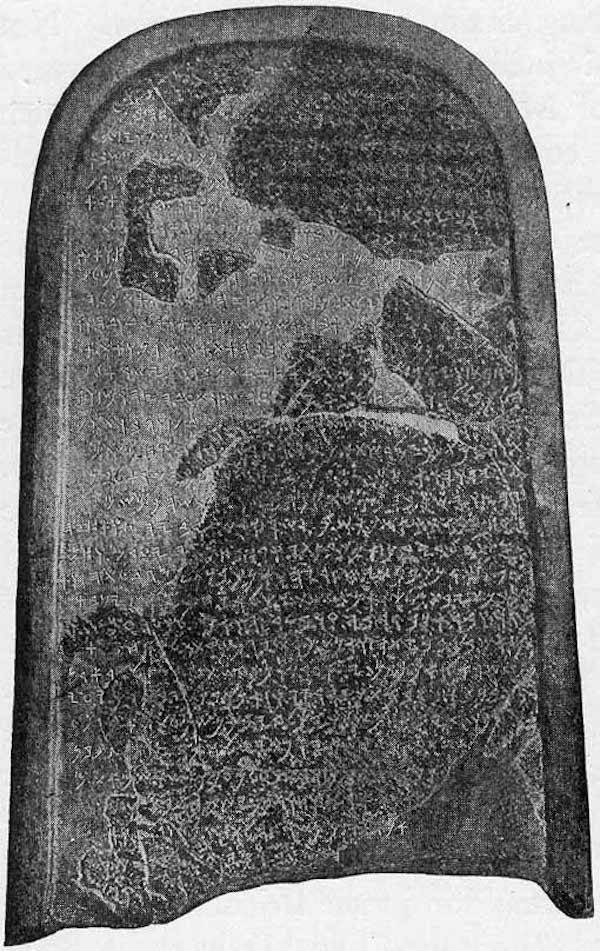Ancient Stone Altar Unearthed: Could It Reveal Secrets of a Forgotten Biblical Battle?
Moab was an ancient kingdom located in the southern part of modern-day Jordan.

Wikimedia CommonsThe ancient Mesha Stele tablet that also has inscriptions written in Moabite on it.
The first interaction between Moab and the Kingdom of Israel is believed to have occurred in 1452 BC. Later, the Kingdom of Moab, under the rule of King Eglon, attacked the Israelites, leading to eighteen years of Israel paying tribute to Moab. It wasn’t until Israel’s King David conquered Moab that the latter would have to pay tribute to the Kingdom of Israel instead.
Incredibly, the ancient altar, which had been originally discovered on the excavation site of Khirbat Ataruz back in 2010, is not the first historical relic unearthed by scientists that mentions King Mesha’s rebellion.
In 1868, an ancient relic known as the Mesha Stele — an inscribed three-foot-tall black basalt stone tablet that dates back to 9th century B.C. — was dug up in Dhiban, Jordan. Since its discovery, researchers have been trying to decipher the ancient writing on the tablet which is also in Moabite.
Some archaeologists claim that the inscriptions on the Mesha Stele talk about how King Mesha ravaged the city’s inhabitants during his conquest of Ataroth, and the existence of a biblical figure known as King Balak. However, the severe damage on the ancient tablet has caused much of the writing on it to be illegible, so historians and biblical experts have tempered interpretations of the Mesha Stele.
Similarly, researchers involved in studying the ancient stone altar note that much “remains unclear about this inscription.” Nevertheless, the newly discovered inscriptions, the study acknowledges, provide “a new important historical witness” to the time of kingdoms past.













